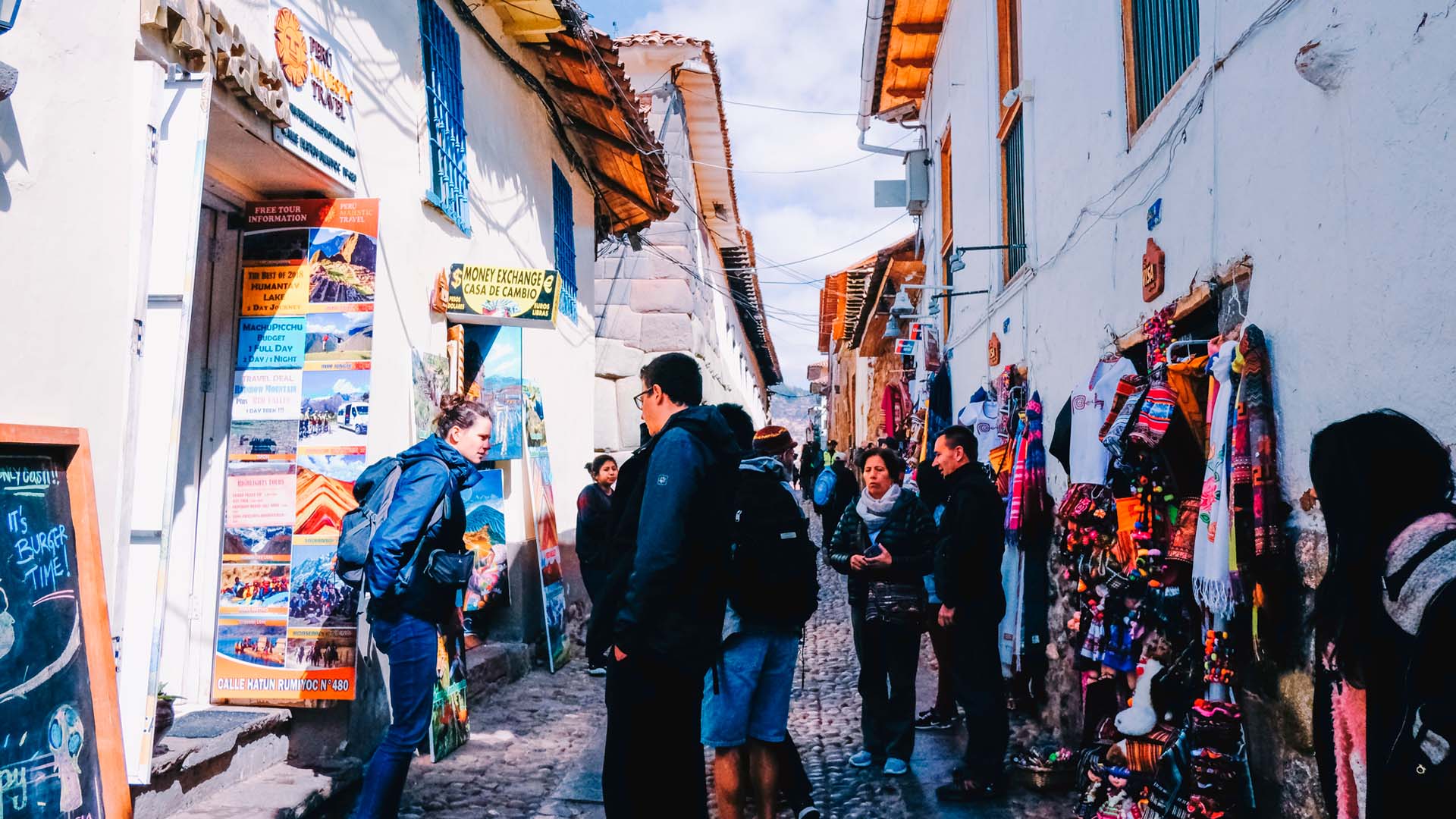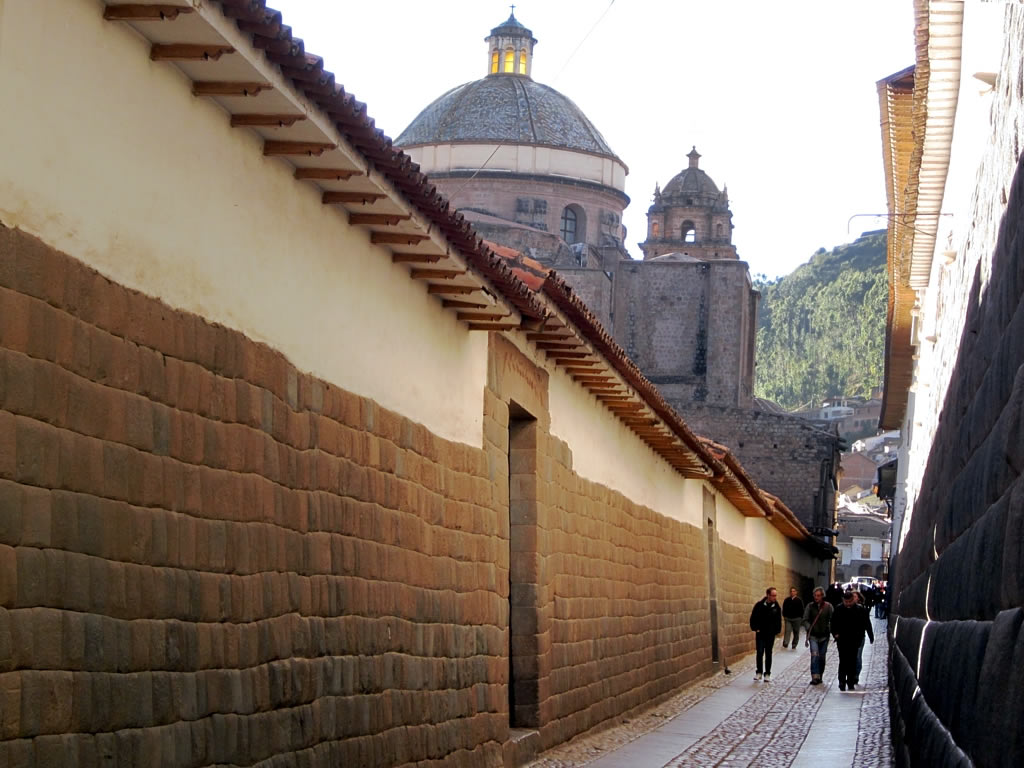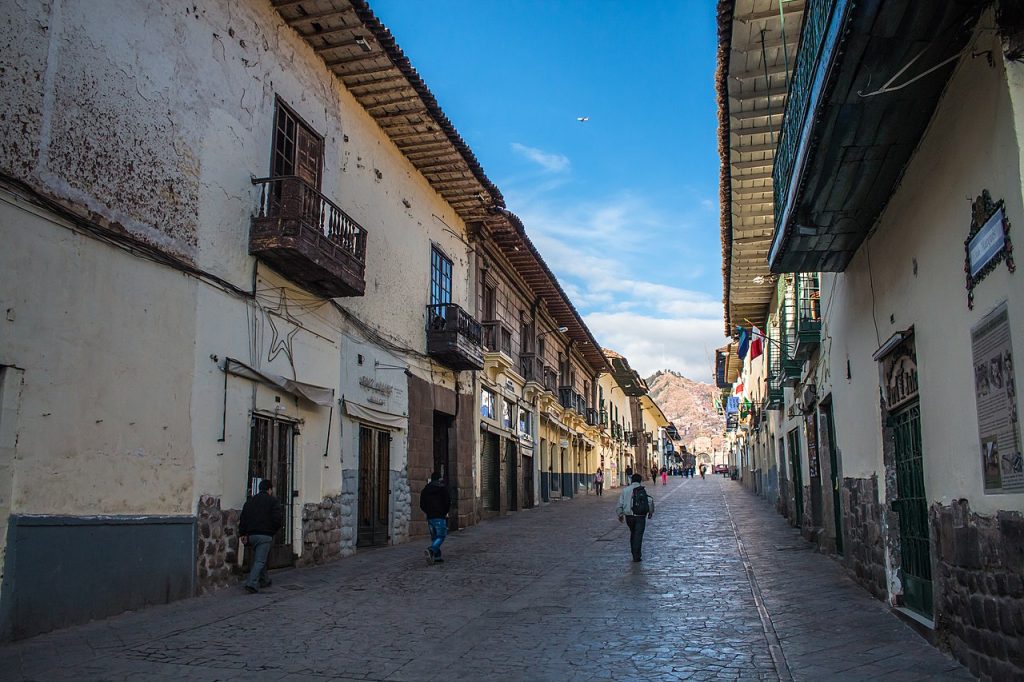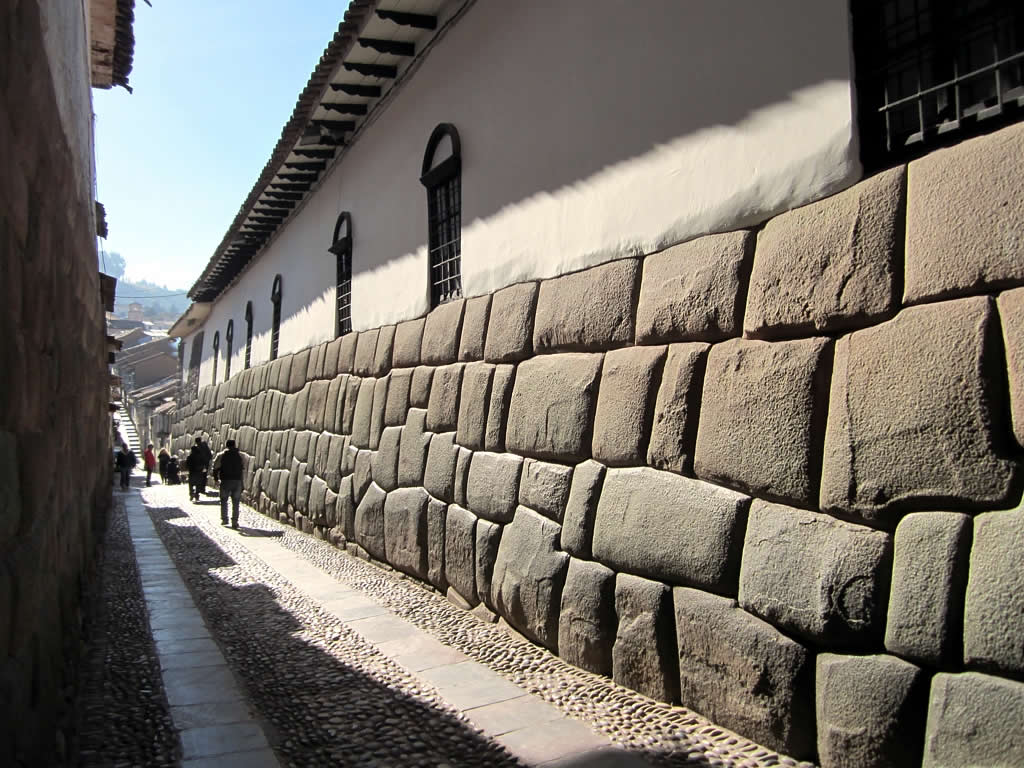Written by Sam Corporations May 18, 2023

Cusco was the capital of the Inca empire. That is why its streets host a past full of history and mysteries. Many of them have their origins in the same Inca era. Others were built in colonial times. During a visit to Cusco, many people are unaware that they are passing through a street where some important event occurred in the past. Get to know the ten main streets of Cusco and their historical past.
Loreto is the name of one of the most historic streets in the city of Cusco. It connects Maruri street with the Main Square. A long and solid Inca wall forms this street. This wall belonged to the palace of Emperor Huayna Cápac, the ‘Amaru Cancha’ (house of the serpent). In one part of this immense site, the Acllahuasi was also built, where the famous priestesses ‘virgins of the sun’ were prepared.
At the end of this street, in front of the Main Square, the ‘Chapel of Our Lady of Loreto’ was built in colonial times, which gave the name to the street. Due to its historical importance it is also called ‘Intik’ijllu’ (street of the sun). It was traced in the Inca era. Today you can see craft fairs on one side of the street. It measures 4.5 meters wide by 231 meters long approximately.

Slippery and perhaps the steepest slope in the city of Cusco. It joins the surroundings of the Main Square with the San Cristóbal Square. Its name is due to the difficulty of overcoming this slope as well as its cobblestone floor that can be slippery for walkers. This street is frequented by visitors who seek to be photographed at the San Cristóbal viewpoint or who seek to reach Sacsayhuaman on foot.
The Resbalosa street has an Inca origin. In the Quechua language it is also known as ‘Sikitakana’ street which means ‘you hit your butt’. Currently it is a quiet street where you can find hotels and restaurants on both sides. Like all Inca streets, this one is narrow. It is recommended to descend carefully so as not to slip.
This peculiar Cusco street owes its name to a stone wall with a small carving of seven thin snakes. It is located in the middle of two tall and strong colonial buildings: the monastery of Las Nazarenas and the church of San Antonio Abad (currently both buildings are luxury hotels).
During the Inca times this street was called ‘Amaru ccata’ which means ‘fourteen snakes’. The reason is that on each side of the wall there are seven snakes. The street also has an Inca origin. This pedestrian path measures 2 meters wide by 102 meters long. There are two arches that support the high walls on its sides. The street leads from Nazarenas small square to Choquechaka street.
-How to get there? From Cusco’s Main Square, take Cuesta del Almirante Street and continue to Nazarenas small square. In the central part is 7 Culebras Street.
-What to see nearby? Luxurious hotels, restaurants as well as the monastery and square of Las Nazarenas.
This busy street has always been of great importance, both in the Inca and colonial times. It is located just 300 meters from the Main Square, on the road that leads to San Francisco Square. Its initial layout occurred in the Inca era. This street adjoined the old city square, the Huacaypata Inca (large). It was also part of the royal roads to the southwest of the Inca empire.
During colonial times the street was an important point of entry into the city. Important mansions were built in its vicinity, such as that of the Marquis Diego de Esquivel and Jaraba. Due to the mansion of this marquis, the street was called ‘Marqués Street’. During the Republican era, the Cuzco historian Luis E. Valcárcel and the Cuzco photographer Martín Chambi lived there. Today it is a street full of tourist businesses.

This street is one of the most historic in the city of Cusco. Its origins date back to the same Inca era. The palace of Emperor Huáscar was built there. Later it became a colonial mansion for various personalities such as Viceroy José de la Serna (last Viceroy of Peru) or Admiral Francisco Alderete Maldonado.
Cuesta del Almirante street leads from the Main Square of Cusco to the Nazarenas small square. It is narrow and long, as were the Inca streets. During the beginning of the Republic, the government house of Andrés de Santa Cruz was housed in the Casa del Admiral by order of the liberator Simón Bolívar. Currently this palace belongs to the National University of Cusco. The Inca Museum is housed there.
Hatun Rumiyoc is a street of Inca origin whose name, translated from the Quechua language, means ‘Of the largest rock’. The reason for this name is due to the fact that the Incas built the palace of Emperor Inca Roca on this street. Until today the formidable stone walls of this palace can be seen, where the famous ‘Stone of the 12 angles’. These Inca constructions are free because they are part of the public road.
Hatun Rumiyoc street connects the surroundings of Cusco’s Main Square with the San Blas slope. The street is 3 meters wide and 141 meters long. It stands out for the many craft stalls such as jewelry, clothing and more. In one of the corners is the Archbishop’s Palace. However, the main tourist attraction of this street is definitely the ‘Stone of 12 angles’.
In the city of Cusco there are several streets with the name ‘seven’ as their main characteristic. One of the most famous is Siete Angelitos Street. The reason for its name is due to the figure of seven little angels in one of the colonial mansions that was owned by the religious Blas de Bobadilla. Later figures of angels have been carved on the stones surrounding this famous Cusco street.
This street is located in the neighborhood of San Blas, in one of the neighborhoods of Carmen Alto street. It is said that Blas de Bobadilla ordered the painting of the figure of seven little angels in contrast to the fame of Siete Diablitos street. Today this street offers lodgings, bars and other tourist businesses. It has that silence and narrowness typical of the Inca streets. It is not very crowded by walkers.
How to get there? From Cusco’s Main Square, take Cuesta del Almirante Street and Siete Culebras Street. Then, on Choquechaka Avenue, take Siete Angelitos Street.
What to see nearby? The San Blas Square as well as shops and tourist businesses.

Another of the most famous streets with the number ‘seven’ in the city of Cusco is Siete Diablitos Street. Its name is not due to any phantasmagorical fact but to the fact that in another time young lovers played there. Because women frequently became pregnant, the street became a kind of ‘cursed street’. Since then, the inhabitants of Cusco have known it as Siete Diablitos Street.
Siete Diablitos Street is also located in the San Blas neighborhood, very close to Siete Angelitos Street. It has the narrowness and typical silence of Inca streets. Nearby you can visit the San Blas Square as well as several craft shops and small restaurants. Although it is not very busy, there are still some lovers who continue the tradition of meeting on this famous street.
As its name indicates, this difficult slope leads to the San Blas neighborhood, one of the public spaces most famous in the city of Cusco. Its original layout dates back to the Inca era. In the upper part, it adjoins the church of San Blas, an ancient temple that worshiped the god of thunder “Illapa”. Due to this, it enjoyed great importance not only in the Inca era but also during the colony and the republic.
The street leads to the small square of San Blas. It measures 6 meters wide by 118 meters long. For the Incas it was an important road that connected the Huacaypata (main square) with the royal sections. Today on both sides you can see craft shops, hotels and restaurants. From the top you have a nice view of the city of Cusco. Visitors need a bit of effort to get there.
This street is also one of the most historic in the city of Cusco. The chronicles tell that in this street the Spaniards dropped the enormous stones brought from Sacsayhuaman for the construction of the Cathedral. A group of several Indians were in charge of containing the stones for which they suffered bitter injuries and even fatal deaths. Since then it has been called ‘Mucchuicata’ which means ‘street of bitterness’.
This street is made up of approximately two hundred stone steps. It joins the surroundings of the Main Square of Cusco with the road that leads to Sacsayhuaman. Like many Inca streets, it is silent, although very crowded during the Inti Raymi festival, since that is where the road to this archaeological site is.
Loreto Street
Resbalosa Street
Siete Culebras Street
Marqués Street
Cuesta del Almirante Street
Hatun Rumiyoc Street
Siete Angelitos Street
Siete Diablitos Street
Cuesta de San Blas Street
Cuesta de la Amargura Street
Quality
Contact our travel advisors to plan the most complete trip of your life.
Simplified ease of communication, text us on WhatsApp, email or call us.
Our guides are local and have vast knowledge in Peruvian culture and history.
100% local company. Development and environmental sustainability
Our groups never exceed 10 people, giving you an unforgettable experience
Discover an exceptional journey where perfection meets adventure.